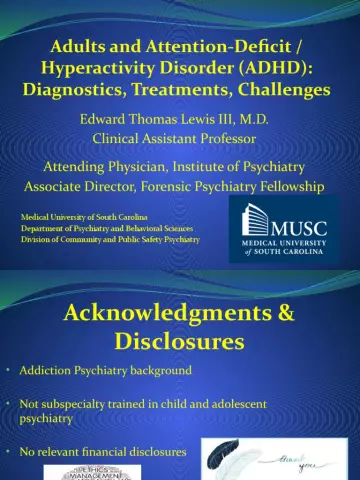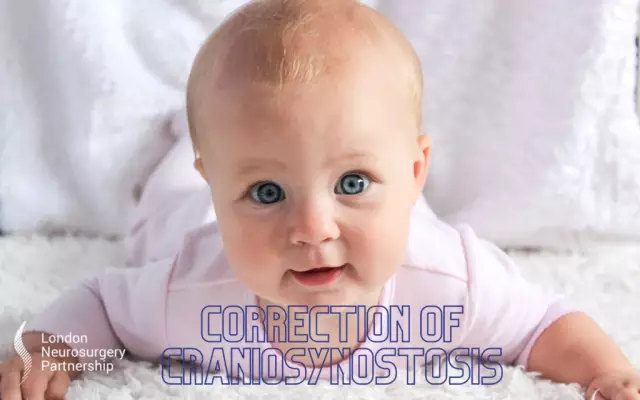- Author Rachel Wainwright [email protected].
- Public 2023-12-15 07:39.
- Last modified 2025-11-02 20:14.
Strabismus

Strabismus (strabismus, heterotropy) is an abnormal position of the eyes caused by dysfunction of the oculomotor muscles, in which the eyes look in different directions.
Each of the eyes focuses in one direction, but sends different images to the brain, as each person can easily verify by alternately closing the right and then the left eye. In the cortical part of the visual analyzer, the brain combines the pictures of both eyes, obtaining a single three-dimensional image - this is how binocular vision works normally. With strabismus, the eyes do not focus on one point, and the images are so different that the visual analyzer is not able to merge them into a single image.
With strabismus, the brain suppresses the image obtained by the unhealthy, squinting eye, and gradually the eye is completely turned off from the vision process. A condition called amblyopia develops, which manifests itself in an increasing decrease in vision due to suppression of the function of the eye by the brain. A suppressed eye is called amblyopic, or "lazy." This process develops rapidly in the case of strabismus in children, since their brains very quickly adapt to changing conditions. Amblyopia is reversible if urgent and vigorous measures are taken, otherwise the eye may go blind completely and no longer restore its functions.
In adults, amblyopia also develops when strabismus occurs, but much more slowly. Vision in the damaged eye decreases slowly, but due to defocusing and the transmission of two too different images, the effect of ghosting occurs.
Causes of strabismus
Strabismus can be congenital or acquired. In the first case, the cause of strabismus is a hereditary predisposition, congenital anomalies in the development of the oculomotor muscles or diseases of the mother during pregnancy.
Among the causes of acquired strabismus, diseases of the central nervous system are most often called; trauma, both physical and mental; deterioration of vision in one of the eyes; transferred infectious diseases, which are a common cause of strabismus in children.
Types of strabismus
Strabismus is divided into two types: friendly and paralytic.
- Concomitant strabismus appears equally when looking in all directions, both eyes are involved, while both deviate from the norm by the same distance. Concomitant strabismus develops in children much more often than in adults. The most common cause of strabismus in this case is progressive eye diseases.
- Paralytic strabismus is caused by paralysis of one of the oculomotor muscles resulting from a developmental abnormality, trauma, or a disease of the nervous system or blood vessels. In this case, usually one eye is affected. Paralytic strabismus in children and adults occurs equally often.
By the nature of the deviation, strabismus is:
- Convergent - the eye is directed towards the bridge of the nose
- Diverging - the eye is directed to the temple
- Vertical - the eye is directed either downward or upward
- Mixed - combines the features of several forms
According to the stability of the manifestation, strabismus can be constant or periodic.
Strabismus symptoms
The main symptom of strabismus is the appearance of the eyes, visible strabismus. This is not always a reliable sign, for example, strabismus in children under one year old is often imaginary. The imaginary strabismus is associated with the structural features of the palpebral fissures in young children, due to which the orbits are turned outward, resulting in the impression of diverging strabismus. Strabismus in children under one year old can be suspected when one eye is constantly rejected, showing signs of paralytic strabismus, but this may simply be caused by the fact that bright toys are always on one side of the crib.
In addition to the visible deviation of the position of one of the eyes, the symptoms of strabismus are the forced position of the head (constant tilt to one side or turn), which compensates for double vision, squinting, headaches and dizziness, as well as unilateral decrease in vision.
Diagnosis of strabismus
Strabismus is diagnosed during a full ophthalmologic examination, at present, special computer equipment is used for this. Binocular vision tests are carried out, deviation, refraction and mobility of the eyeballs in all directions are checked. When diagnosed with strabismus, a neurological examination is mandatory.
Strabismus treatment

Correction of strabismus in some cases is possible by therapeutic means, but the most radical and effective method is surgical treatment of strabismus. The choice of method depends on the cause of the strabismus, as well as on its type. Due to the risk of developing amblyopia and loss of vision in one eye, which will inevitably lead to deterioration of vision and the second, healthy eye, treatment of strabismus should be started as early as possible.
If the cause of strabismus is in an eye disease (myopia, hyperopia, astigmatism, etc.), it is necessary to treat this disease first. Often, the correction of visual acuity and the measures taken to eliminate amblyopia are sufficient to correct strabismus, especially strabismus in children, since in childhood the nervous system is extremely sensitive and easily rebuilt.
For optical correction, the use of special glasses or lenses, gluing a healthy eye, which encourages the activity of eyes with impairments, special exercises that stimulate the correct work of "lazy" muscles. Corrective glasses can be successfully used even in the case of strabismus in children under one year old. You need to know that non-surgical treatments for strabismus require persistent, consistent and long-term use, over several months or even years.
In case of failure of conservative methods of correcting strabismus, as well as in some forms that are not subject to conservative correction, surgical treatment of strabismus is used. The type of surgery is determined by the ophthalmologist depending on the nature of the strabismus disease. The operation itself is usually performed under local anesthesia; only with strabismus in children, general anesthesia is used. As a rule, the patient can be discharged on the day of surgery.
In the treatment of strabismus after surgery, consolidation of the result is required, and active measures are still needed to train the oculomotor muscles to prevent or eliminate existing amblyopia. Thus, to eliminate strabismus, surgical intervention alone is not enough; an integrated approach is required. With this approach, strabismus is quite amenable to correction.
YouTube video related to the article:
The information is generalized and provided for informational purposes only. At the first sign of illness, see your doctor. Self-medication is hazardous to health!






